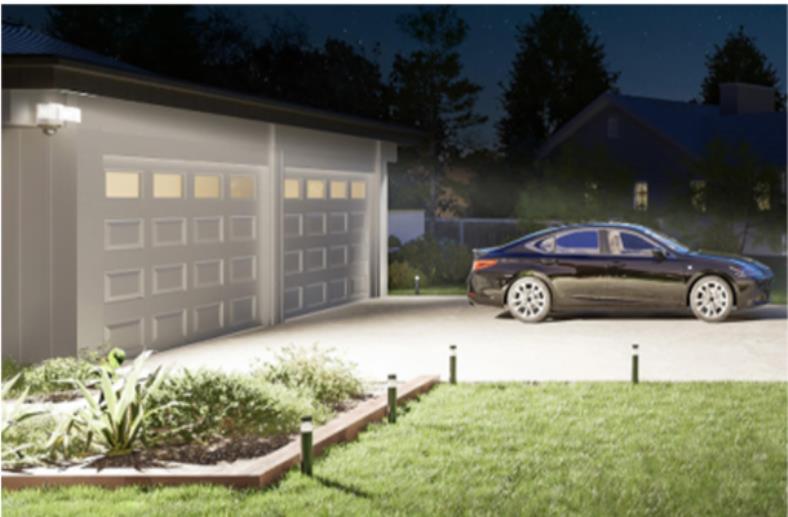As guardians of modern home security, security light cameras play a pivotal role in fortifying our homes. However, their effectiveness hinges not only on advanced features but also on strategic placement. Choosing the right locations for installation is paramount to ensure optimal surveillance coverage and deter potential threats effectively. In this guide, we explore the art of strategically placing security light cameras, shedding light on key areas both inside and outside your home where these vigilant devices can maximize their protective potential.
1. Entry Points
The most critical areas to install security light cameras are the entry points of your home. Focus on doors and windows that serve as potential access points for intruders. Place cameras above the front door, back door, and garage doors to capture clear footage of anyone entering or attempting to enter your home. Ensure that the cameras are positioned high enough to prevent tampering and are angled to cover the entire entry area.
2. Front Yard and Porch
The front yard and porch are high-traffic areas that provide valuable insights into activities around your home. Installing security light cameras in these locations not only deters potential intruders but also captures footage of visitors, deliveries, and any suspicious behavior. Ensure that the cameras have a wide field of view to cover the entire front yard, porch, and walkway leading to your home. Nowadays, the non wifi doorbell camera starts getting more attention, which can cooperate with the light cameras very well.
3. Backyard and Patio
Backyards and patios are often overlooked but can be vulnerable areas for unauthorized access. Install security light cameras to cover these spaces, focusing on entry points such as back doors, sliding glass doors, or basement entrances. Additionally, consider placing cameras near valuable items like outdoor equipment, grills, or sheds to deter theft.
4. Garage and Driveway
The garage and driveway are common targets for burglaries and unauthorized access. Install a security light camera to monitor these areas, ensuring comprehensive coverage of your vehicles and any potential entry points to your home. Position cameras to capture license plates and identify individuals approaching or departing from your property.

5. Perimeter of the Property
To create a robust security perimeter, strategically install cameras along the exterior walls of your property. This provides an early warning system, capturing footage of any activity near the boundary. Ensure that the cameras are positioned to cover blind spots and areas where intruders may attempt to breach your property.
6. Common Areas Inside the Home
While the primary focus is often on external security, it’s equally important to consider strategic placements inside your home. Install security light cameras in common areas such as the living room, kitchen, or hallway. These locations offer a comprehensive view of the interior and can capture footage in the event of a break-in or suspicious activity within the home.
7. Stairways and Hallways
Stairways and hallways are natural pathways for intruders moving through your home. Placing security light cameras in these areas ensures that any movement is captured, providing crucial footage during potential security incidents. Install cameras at strategic angles to cover the entire length of staircases and hallways.
8. Dark Corners and Hiding Spots
Dark corners and hiding spots around your property can be potential areas for intruders to lurk unnoticed. Install security light cameras in these locations to eliminate blind spots and deter anyone attempting to hide or approach your home undetected. Well-lit surroundings act as a powerful deterrent.
Conclusion
As we know, the strategic placement of security light cameras is pivotal in creating a comprehensive and effective surveillance system for your home. By strategically covering entry points, common areas, and vulnerable spots both inside and outside your home, you maximize the protective potential of these vigilant devices. Remember to consider factors such as field of view, camera angles, and the specific layout of your property to ensure optimal coverage and enhance the overall security of your home.

